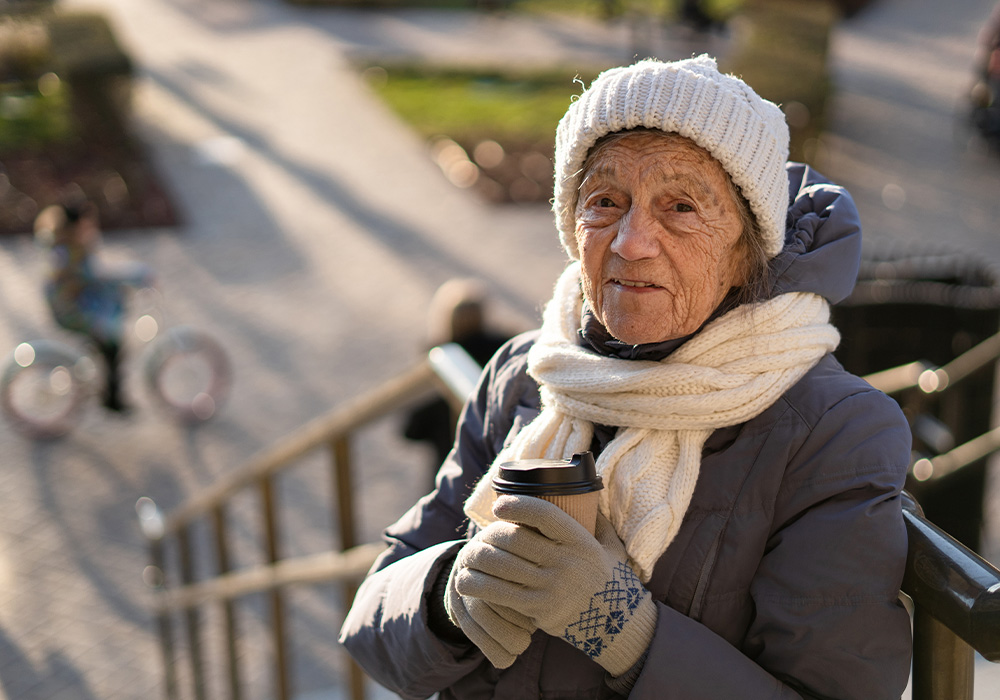The shorter days and colder weather of winter can impact anyone’s mood, but for seniors and Caregivers, these changes may bring unique challenges. Seasonal Affective Disorder (SAD) is a form of depression that occurs during the winter months, often triggered by reduced exposure to natural light. Understanding how SAD affects senior health and Caregiver well-being is critical, especially when providing or seeking in-home care services.
Recognizing the Impact of SAD on Senior Health
Seasonal Affective Disorder, often referred to as the “winter blues,” can affect individuals of all ages, but seniors are especially vulnerable to its symptoms.
SAD can manifest in various ways, including:
- Persistent feelings of sadness or hopelessness
- Fatigue and low energy
- Difficulty concentrating
- Changes in appetite or weight
- Loss of interest in activities once enjoyed
For seniors, these symptoms can exacerbate existing health conditions, making it harder to stay engaged and active. For family and professional Caregivers, juggling these emotional struggles while providing care may lead to burnout or reduced effectiveness. Acknowledging these signs early on is the first step toward combating the winter blues.
Coping With SAD: Tips for Seniors and Caregivers
With an emphasis on Caregiver and senior health, we’ve compiled the following tips:
Increase Exposure to Light
Light therapy is one of the most effective ways to manage SAD. Spending time outdoors, even on cloudy days, can help boost mood and energy. For those unable to get outside, using a light therapy box that mimics natural sunlight is a great alternative. Place it in areas where seniors and caregivers spend most of their time, such as living rooms or dining spaces.
Sometimes, simply pulling up the blinds or moving activities to chase the sun in a home can make a huge difference in mood and productivity.
Stay Active
Regular exercise is another powerful tool to combat SAD. Activities like walking, yoga, or simple stretching can improve mood by releasing endorphins. For seniors, consider low-impact exercises tailored to their mobility levels. Caregivers can support and participate in these activities, fostering a sense of companionship and motivation alongside Clients.
Seek Professional Help When Needed
If symptoms of SAD persist or worsen, seeking professional guidance is essential. Therapists and counselors can offer strategies to manage depression, while doctors may recommend medications or other treatments. In-home care providers can assist by coordinating these services and ensuring that seniors attend necessary appointments.
In an effort to support our Caregivers’ mental and physical well-being, we’re proud to offer a 100 percent company-paid Employee Assistance Program that provides free mental health and grief counseling (among other benefits) available 24/7.
Leveraging In-Home Care Services for Winter Support
In-home care services play a crucial role in supporting both senior health and Caregiver well-being during the winter months. Professional Caregivers (like our dedicated team) provide companionship, reducing feelings of isolation that often accompany SAD. They also assist with daily tasks, ensuring seniors maintain a structured and fulfilling routine. From preparing nutritious meals to encouraging light physical activities, in-home care providers help create an environment conducive to mental and physical health.
Additionally, in-home care services relieve family Caregivers by sharing responsibilities. This support allows Caregivers to take much-needed breaks, focus on their well-being, and avoid burnout—ensuring they can provide the best possible care.
Caregiver Wellness: Support and Assistance Every Season
At the Caring for Family of Companies, we recognize the vital role our Caregivers play in maintaining senior health and overall wellness. That’s why we’re committed to supporting our employees’ mental and physical health through:
- Comprehensive Training: Equipping Caregivers with the skills and knowledge to recognize and address SAD in themselves and their Clients.
- Flexible Schedules: Allowing Caregivers to balance their professional responsibilities with personal self-care.
- Wellness Resources: Providing access to mental health support, stress management tools, and regular check-ins to ensure employees feel valued and heard.
Supporting You, Supporting Them
The winter months don’t have to be a season of struggle. By recognizing the signs of SAD, implementing effective coping strategies, and leaning on resources like in-home care services, seniors and Caregivers can navigate the season with resilience. We’re here to ensure both Clients and Caregivers thrive, no matter the time of year.
If you’re seeking compassionate in-home care for yourself or a loved one, contact us today to learn how our team can help brighten the winter months and beyond.

